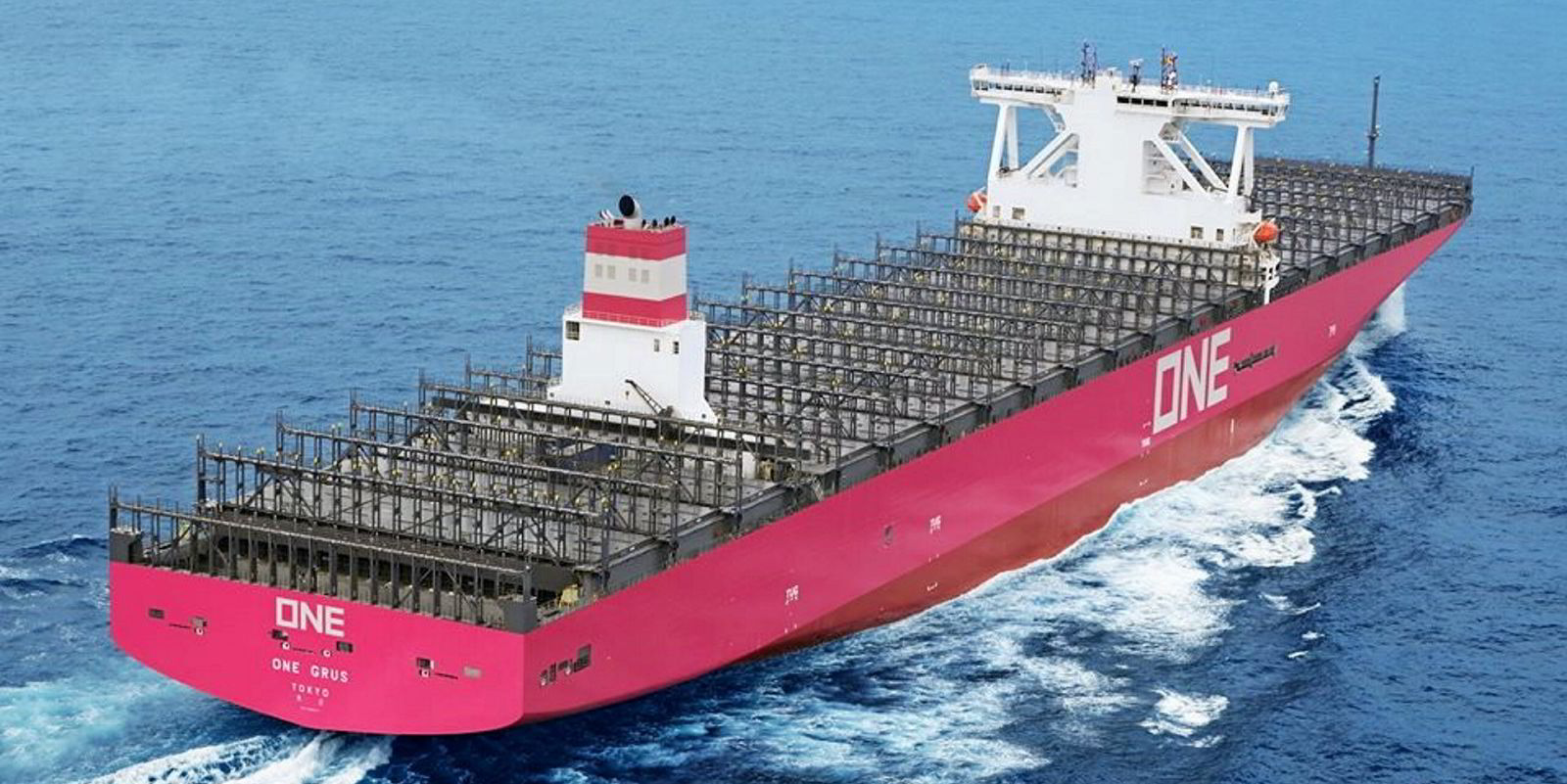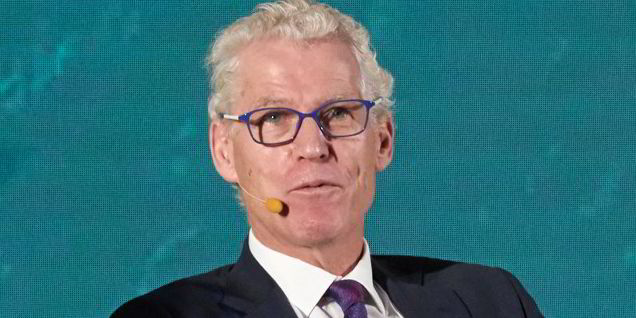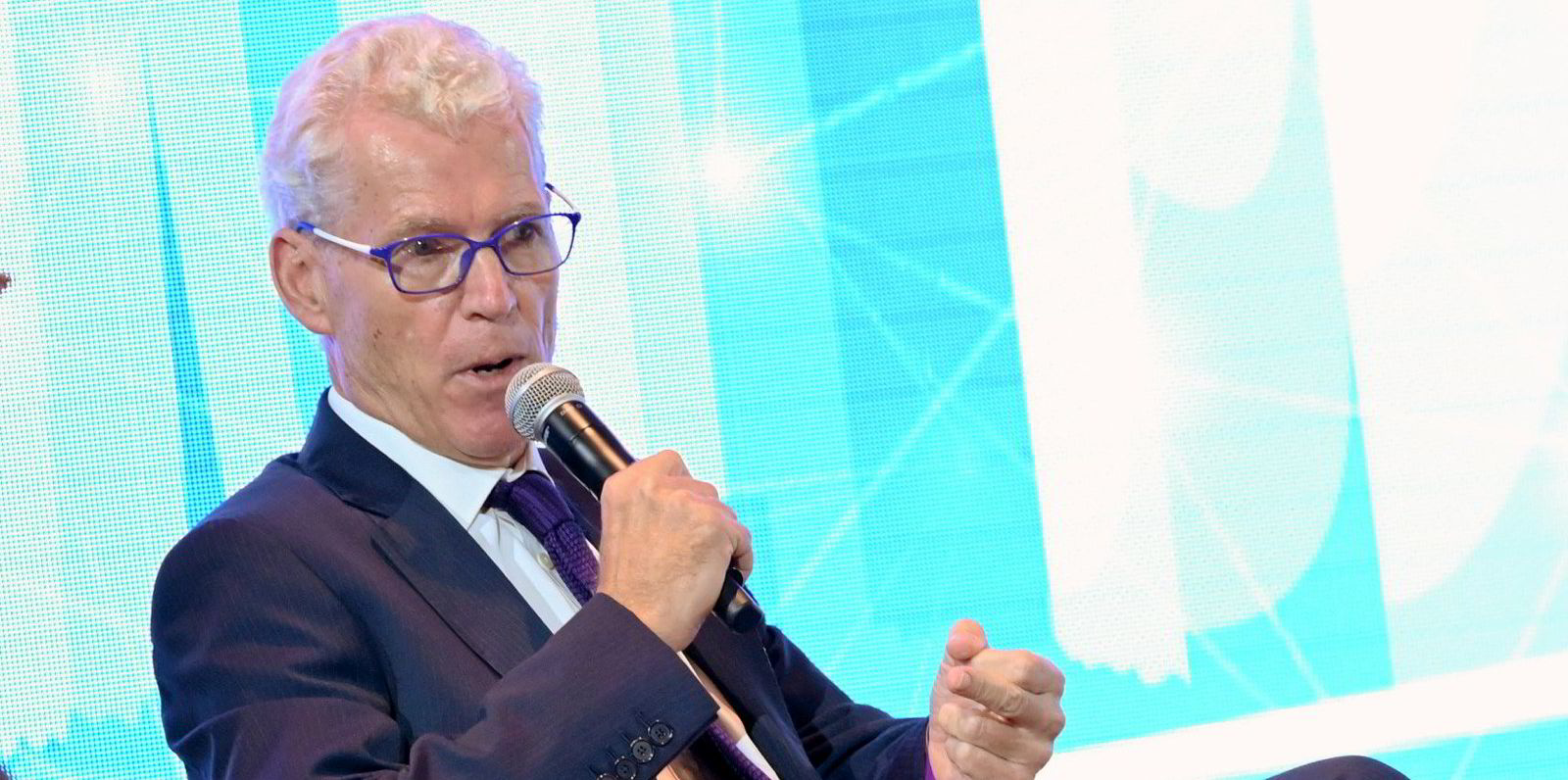Jeremy Nixon exudes confidence in the future of container sector as the company he leads, Ocean Network Express (ONE), celebrates its fourth anniversary.
Given the record profits ONE has been reporting in recent quarters — in January, it lifted its full-year forecast for its 2021 financial year to $15.46bn — the chief executive has reason to be bullish.
The full-year forecast is a remarkable turnaround from the losses incurred when ONE launched as an amalgamation of the legacy liner services of its three Japanese shareholders, K Line, Mitsui OSK Lines and NYK.
Speaking at a webinar from ONE’s Singapore headquarters, Nixon said the focus of the past four years has been on building the company, getting it set up, getting it operating, getting it to perform profitably.
Profitable it certainly is, and while it could be argued that every liner company has been raking in cash in the current market, Nixon noted that ONE’s Ebitda stands at 53%, against the 40% average of its peers.
“We’re in the right place … that means looking at assets,” he said.
Nixon said the company’s focus is now turning to medium and long-term objectives, which include investing $20bn in assets. Some of that will be invested in container terminals as well as new technology and upgrades to its systems, and more containers.
But the bulk of the investments will go towards new ships.
When ONE launched, its fleet comprised mostly container ships chartered from its three shareholders. Those vessels make up 75% of its total fleet, but by 2030 that will have been reduced to about 20%.
“I think ... the key point is that in the past we have been reliant on our three Japanese shareholders to provide us with tonnage, which of course is coming to an end now,” Nixon said.
“And secondly, we’ve also been quite reliant on the short-term charter market. We really want to take back control.”
ONE wants to have more core tonnage, with vessels on long-term charters or directly owned, to reduce risk from fluctuations in the charter markets and provide more stability.
Nixon explained that between 2022 and 2030, ONE will add new vessels with a total capacity of 1.2m teu, at a rate of about 150,000 teu per year.
However, off-hiring during that period will gradually see older, less-efficient assets disappear, in effect bringing the actual fleet capacity growth from new additions to about 600,000 teu, keeping the fleet expansion in line with trade growth.
Nixon said ONE has no fixed formula on the balance it intends to strike between directly owned and long-term chartered ships.
“We will continue to look at what is the best financial decision for ONE and its shareholders. So sometimes it is better to do long-term leases or long-term charters, other times to actually finance directly ourselves,” he said.
“So, we remain flexible on that and we don’t have any particular ratio. We don’t have any specific commitment to own a certain number of ships or to charter a certain number of ships.”
The process has already begun. TradeWinds reported in late March that the company was close to firming up an order for 10 neo-panamaxes worth more than $1.6bn.
Nixon did not deny the report, but declined to comment on the specifics.
“What I can say is that if you look at the forward investment requirements, we identified the 38 vessels which would give us cover up until about 2024 to 2025,” he said.
“It would not be surprising if we were looking at potentially more orders in the future, and maybe not just charters, but potentially actual direct purchases.
“We’ll make sure that our balance sheet is strong and we can finance that type of activity where and if we need to do it ourselves.”
Nixon justifies the $20bn investment by claiming ONE maintains a positive outlook for the sector.
“Container shipping is still the most efficient and effective way to move freight, particularly involving retailing and manufacturing and food commodity items that make up a very, very significant part of global trade,” he said, describing containerisation as “a well-proven concept”.
“We don’t see any immediate disruptors to that in the short to medium term … the business continues to grow.”






